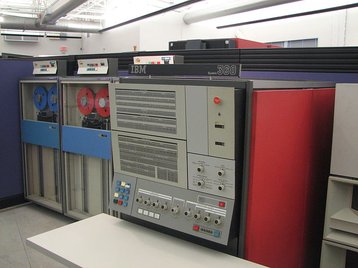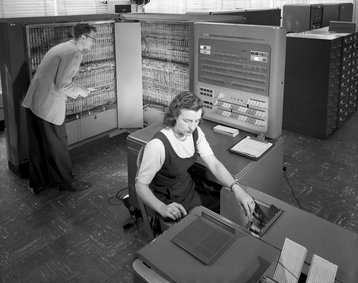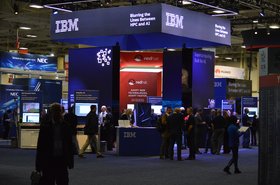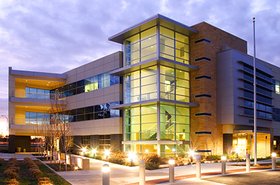Mainframes continue to host businesses’ most important,mission-critical applications. They’re at the centre of banking, manufacturing, retail, energy, the public sector and many other industries. Analysts expect the mainframe market to produce a compound annual growth rate of 4.3 percent up to 2025, increasing from $2,094 million in 2017 to a predicted $2,906 million in 2025.
It was 1952 when IBM’s first mainframe computer came onto the market. And today, we continue to interact with mainframes every day, whether it’s for a bank transaction, an ATM withdrawal, a GP appointment booking, or an online purchase.
The mainframe has adapted and re-invented itself, staking and defending its claim as the most powerful computing power in the world. One mainframe can process 2.5 billion transactions in a single day, which is the equivalent of handling 100 Cyber Mondays – over $790 billion – on one system.
Staying power
Even in the era of cloud computing, the continued growth and appeal of the mainframe isn’t surprising.
Today’s business world is a transaction-heavy environment. Everything from the internet of things (IoT) and the industrial internet of things (IIoT) to telemetry capture and high-frequency trading creates enormous amounts of transactional data. This is information that needs to be processed and used at breakneck speed to keep production lines running and end-user applications responding.
With its superior processing power, the mainframe has become the most powerful computing power on the market, handling over 30 billion transactions per day (even more than Google).
There are also changing consumer habits to consider: people check their bank balances far more often than they used to thanks to mobile devices. Each one of those look-ups is a transactional hit. The same applies to things like pre-loading retail baskets as well as mobile payments and casual messaging.
This growth in transactions hitting the backend is what mainframes were built for. They can operate at a speed and scale that far outstrips the capabilities of many of the systems that were supposed to supersede the technology.
In its maximum configuration, IBM’s latest mainframe hardware can process up to 146 million transactions per second (TPS). In comparison, the default limit for AWS is closer to 10,000 TPS on a single instance.
One might naturally assume that this power comes with a price-tag, but it doesn’t. Open source software and Linux on IBM Z both save on licensing costs, and mean that mainframes are as cost-effective as they are powerful.
Security
The centralized, self-contained nature of mainframe has always made it suitable for compliance challenges. This is especially true now that the EU’s General Data Protection Regulation (GDPR) has come into play.
But with the latest mainframes on the market, its security benefits have vastly expanded.
Since the release of the z14 mainframe server, and for the first time in its 50-year history, mainframes can now encrypt all data at the database, data set or disk level in an extremely cost-effective way.
In fact, there are now such minimal overheads to doing so that enterprise can effectively get rid of their footprint of cryptographic security devices and appliances that are out on the shop floor – instead, using mainframe as a cryptographic hub.
Many businesses have found this to be surprisingly easy; there are, after all, no requirements to change or adjust applications, since each mainframe app now has internal encryption-decryption mechanisms.
Final thoughts
The IBM mainframe has come a long way since the 1950s when it was only a rudimentary interactive interface, and used sets of punched cards, paper tape, or magnetic tape to transfer data and programs.
As the technology has improved, so the benefits of the technology have also expanded.
Yes – mainframe is still counted on for its reliability in situations where frequent or prolonged downtime would be costly or catastrophic. But today, the advantages of modern mainframes are now so much more.
The mainframe is more powerful and more secure than ever before, and it’s the technology for supporting analytics, application management, blockchain, machine virtualization, cloud, containerization and cryptography that are all vital to thrive in today’s economy.
Businesses are no longer running the mainframe as cheaply as they can and sweating the asset. Increasingly, they’re realizing that, modernized and upgraded, it’s the solution they’ve been looking for all along.






